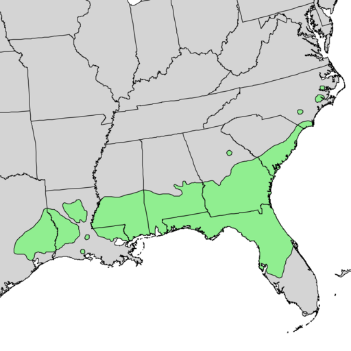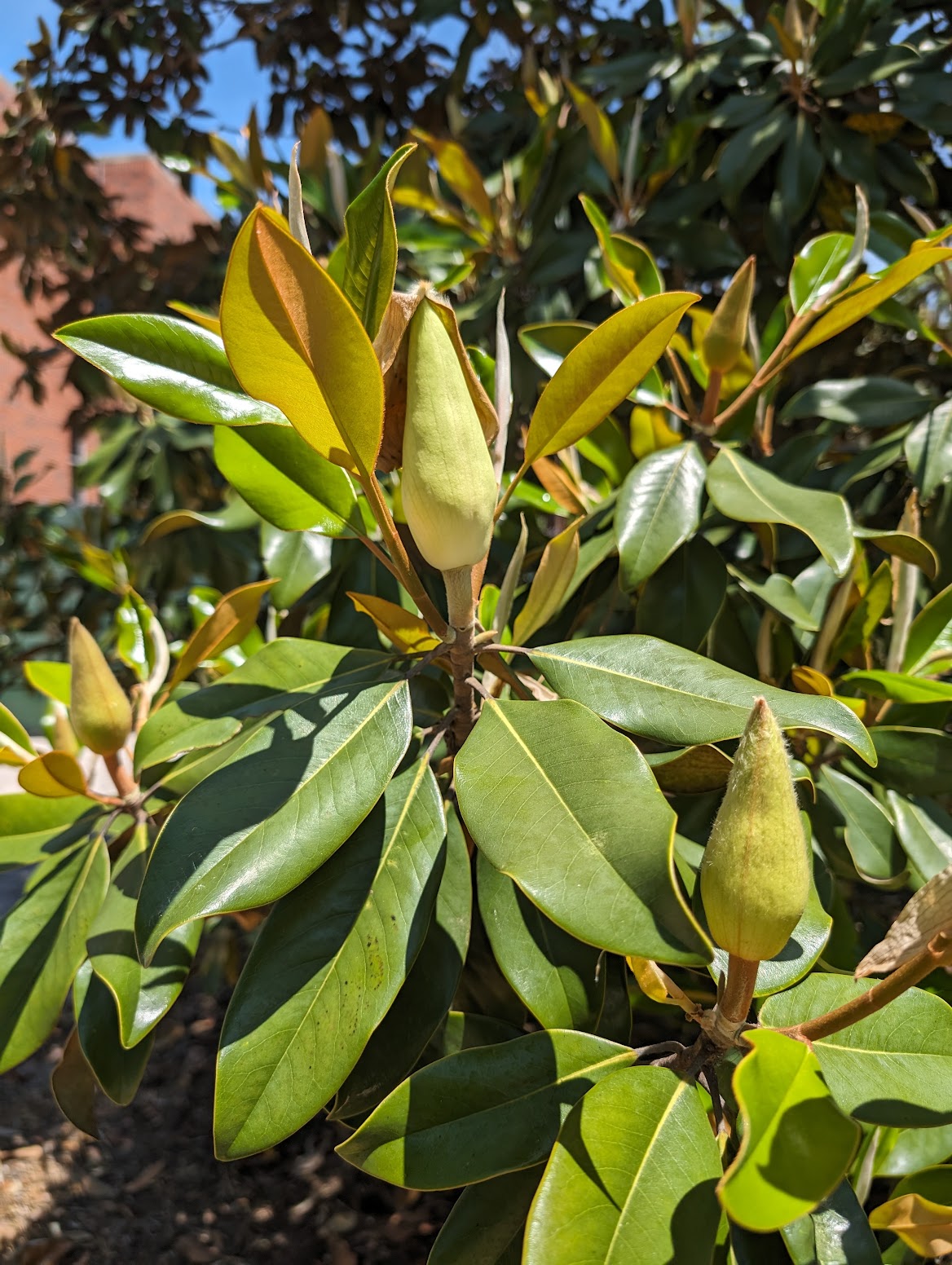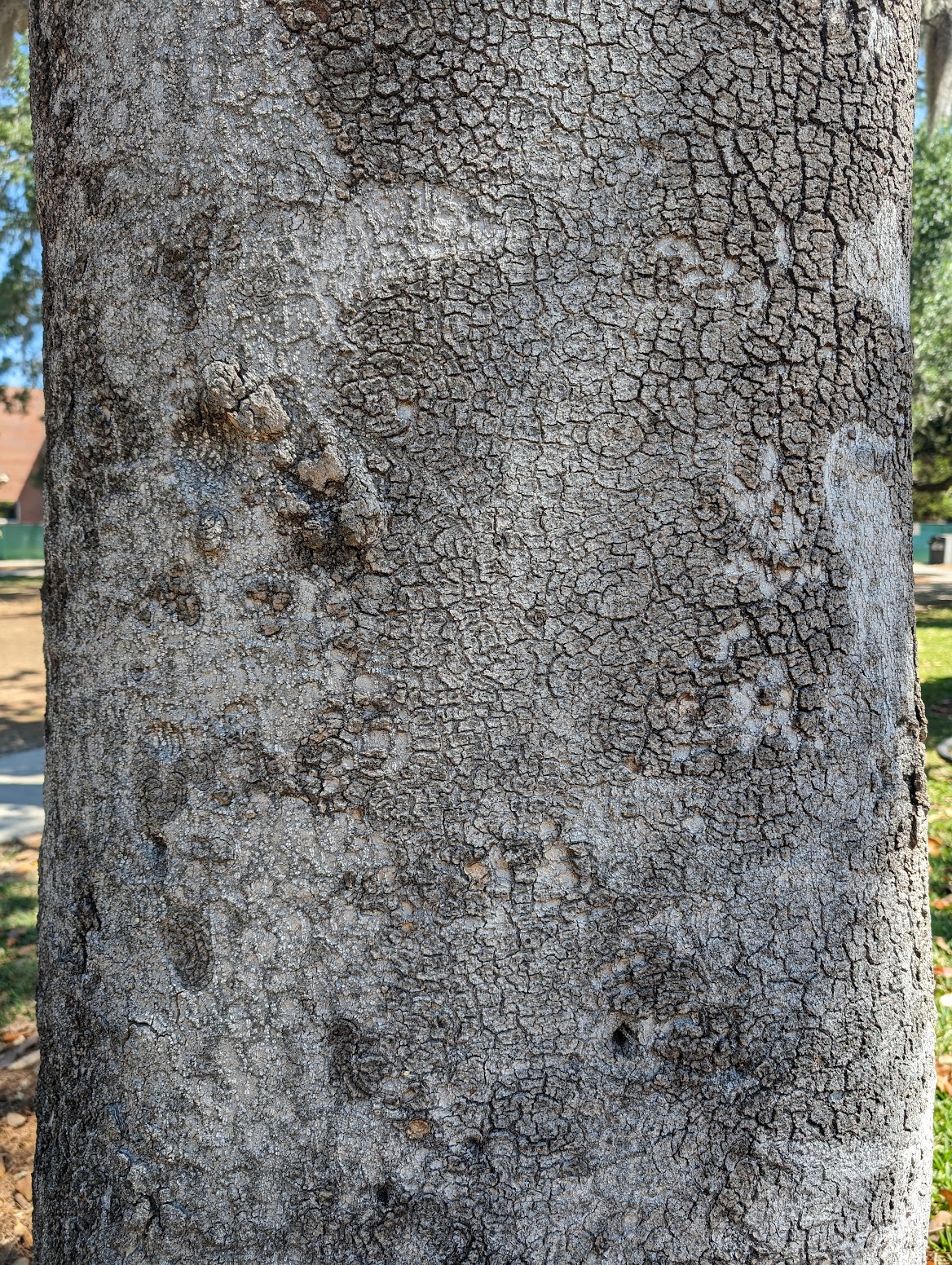Magnoliaceae - Magnolia Family
In 2024, this southern magnolia was 72.8 feet tall and had a diameter of 30 inches. Based on USDA Forest Service models it will absorb approximately 4,087 lbs. of carbon over the next 20 years. Put simply, this tree alone will offset up to 16,539 car miles worth of carbon dioxide produced.
See all species on our Campus Tree Tour.
Introduction
The southern magnolia is an evergreen tree admired by many within the coastal plain of the Southeastern United States. When cultivated in urban areas, the southern magnolia’s white flowers and bicolored leaves offer splashes of color in roadsides, campuses, and residential gardens. On summer days, its dense canopy provides valuable shade.
Physical Description
Life expectancy: 80 - 120 years
Height: 60 – 80 feet
Crown: 30 – 40 feet
Diameter: 24 – 36 inches
Bark: Tan, grey, and smooth bark with limited distinctive features. There may be scaly plates when the bark matures.
Twig: Stipular scars (where stipules have fallen off) that completely encircle the twigs that create thin bands down the twig; a common characteristic of the magnolia family.
Leaves: Large evergreen leaves that are simple, alternate, and thick and leathery to the touch. The topside of the leaves is glabrous (shiny) while the underside varies from a rusty-colored pubescence (hairs) on urban trees to little to no pubescence on wild trees due to genetic cultivation.
Flowers: Large, showy, fragrant white flowers that bloom during late spring and summer.
Fruits: Elongated, cone-like fruits that are 3-5 inches long with red seeds. Known as an aggregate of follicles.
Key Identification Characteristics: evergreen leaves, stipular scars, bark
Past and Present Uses
Although the southern magnolia has limited timber value, it is a highly valued decorative tree. As an ornamental, it grows well in urban areas, often used as a dense screen, windbreaker, or street tree. Its drought and shade tolerance gives the southern magnolia the ability to adapt to a variety of conditions that other ornamental plants struggle to survive in. If used as an urban tree, it is important to note that it sheds fruits and leaves in abundance, littering sidewalks and streets and potentially becoming a nuisance.
Ecological Importance
Origin: Native to the United States
Native Range: Found from southern North Carolina, south to central Florida, west to Eastern Texas.

Figure 1. Native range of Southern magnolia. Photo credit: U.S. Geological Survey
Southern magnolias are found in hardwood forests growing in xeric (dry) to mesic (moderately moist) soils. However, as a bottomland species, they grow best on rich, moist soils along streams and swamps in the coastal plain. These trees are associated with cabbage palmetto, loblolly pine, swamp chestnut oak, sweetgum, and hickory. They are also found in mesic upland sites untouched by fire.
The cone-like fruit of southern magnolias are attractive to birds, and its bright red seeds are eaten by both birds and small mammals.
More Information
https://edis.ifas.ufl.edu/publication/ST371
References
bplant.org. (n.d.). Southern magnolia (Magnolia grandiflora). bplant.org. https://bplant.org/plant/279
Gilman, E. F., Watson, D. G., Klein, R. W., Koeser, A. K., Hilbert, D. R., & McLean, D. C. (2019c). ENH-530/ST371: Magnolia grandiflora: Southern Magnolia. Ask IFAS - Powered by EDIS. https://edis.ifas.ufl.edu/publication/ST371
i-Tree. (2006). Tree tools - calculate the benefits of trees!. i-Tree. https://www.itreetools.org/
North Carolina Plant Toolbox. (n.d.). Magnolia grandiflora. Extension Gardener. https://plants.ces.ncsu.edu/plants/magnolia-grandiflora/
Outcalt, K. W. (n.d.). Southern Magnolia. Magnolia grandiflora L. https://www.srs.fs.usda.gov/pubs/misc/ag_654/volume_2/magnolia/grandiflora.htm



